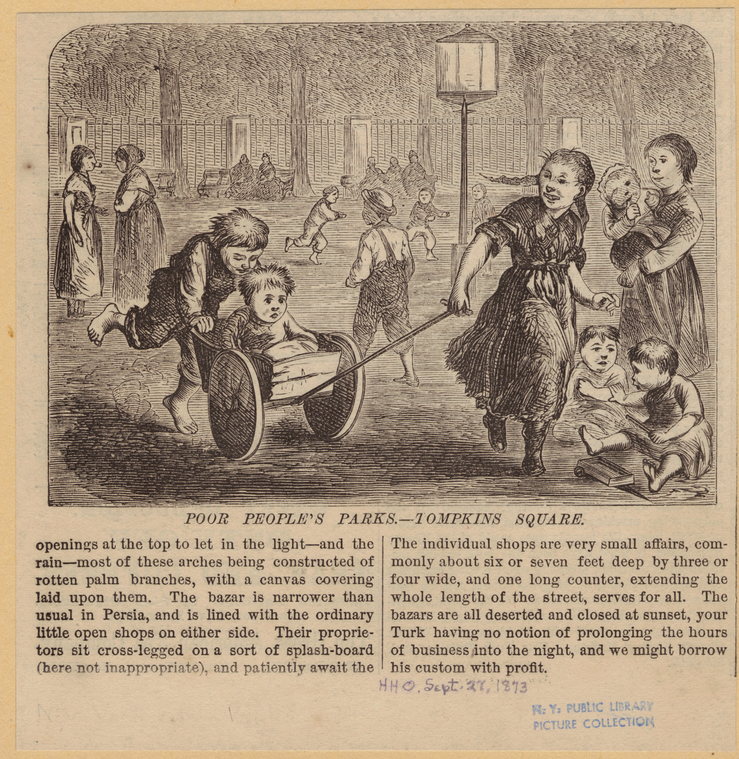Tompkins Square Riots

The protests and clashes of late July and early August 1988 were alternatively described in the newspapers as being a result of a newly instated 1 A.M. park curfew, the influx of homeless camped out there, the noise of the crowds that gathered in the park to play music and hang out, and the overarching dispute over housing and perceived gentrification of the neighborhood. These were the years when “Die Yuppie Scum” seemed a valid and meaningful protest chant and graffiti often expressed other anarchist desires and pipe dreams. What drove the August 6th anti-curfew protest over the edge was not only the rowdy and violent behavior of some of the protesters that night, but the extreme reaction of the police force to the protest.
Tompkins Square has a long history of being a place of confrontation between residents, protesters and the police force. The Astor Place riots spilled over into Tompkins Square, and in January of 1874 a demonstration held by workers’ organizations and the assorted communist groups erupted into widespread violence when the police moved in on protesters and bystanders alike. In the Milstein Division, our clippings file on Tompkins Square Park (it's not cataloged and is only available in our division by request at the reference desk) offers a wide range of takes on the events 20 years ago, from articles from mainstream papers like the New York Times to the anarchist publication The Shadow. In an upcoming Histories post, I’ll talk more about New York’s long history of protests and riots and ways of researching such events in the library.
Read E-Books with SimplyE
 With your library card, it's easier than ever to choose from more than 300,000 e-books on SimplyE, The New York Public Library's free e-reader app. Gain access to digital resources for all ages, including e-books, audiobooks, databases, and more.
With your library card, it's easier than ever to choose from more than 300,000 e-books on SimplyE, The New York Public Library's free e-reader app. Gain access to digital resources for all ages, including e-books, audiobooks, databases, and more.
If you don’t have an NYPL library card, New York State residents can apply for a digital card online or through SimplyE (available on the App Store or Google Play).
Need more help? Read our guide to using SimplyE.
Comments
Memories
Submitted by Nick (not verified) on August 5, 2008 - 11:03pm
i just wanted to see if this
Submitted by student_local (not verified) on April 22, 2009 - 10:43am
the Shadow
Submitted by Dan Jarquio (not verified) on March 25, 2011 - 2:47am